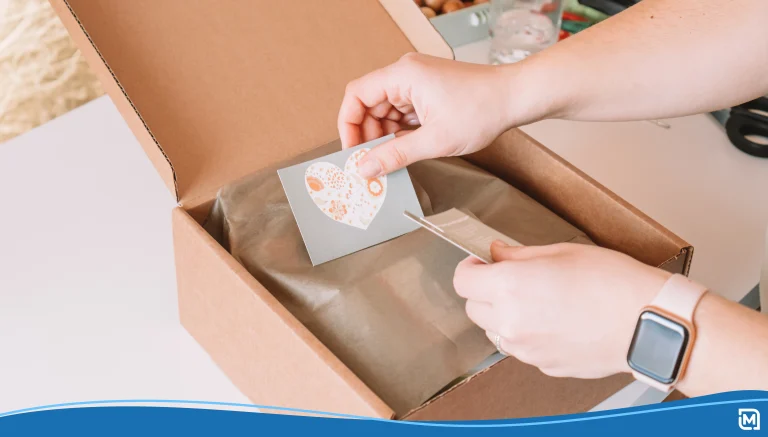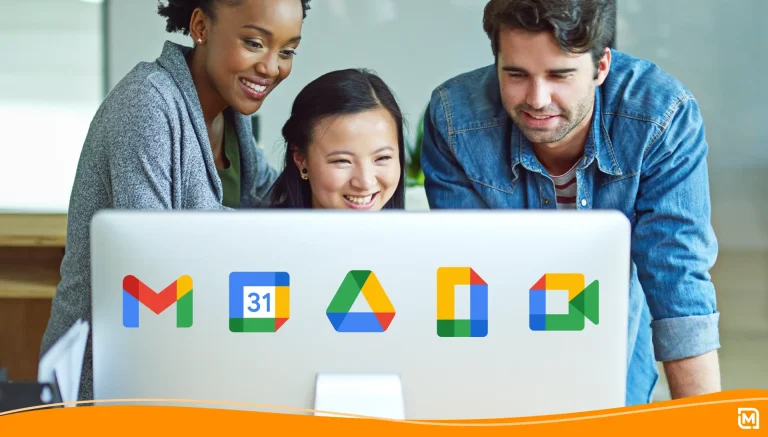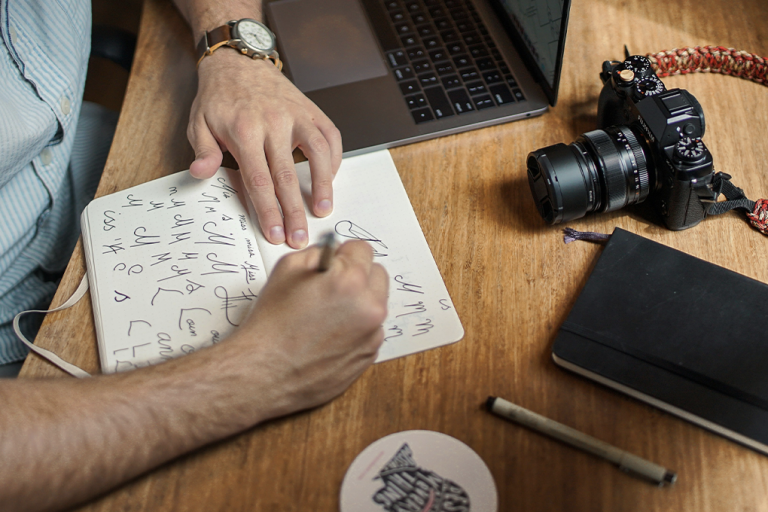Handing out a physical business card is a tangible way to make a lasting impression and connect with clients and potential partners. However, there is one major drawback: Business cards tend to accumulate quite rapidly. How many paper business cards have you collected over the years, only to lose them in the abyss of your desk drawer or toss them out during a cleaning spree? Probably more than you’d care to admit.
Traditional business cards have been a staple in professional circles for decades, but in today’s fast-paced, digital world, they’re starting to feel a little outdated. Enter the digital business card—a sleek, modern alternative designed for the tech-savvy professional.
With just a simple tap, text message, or scan of a QR code, your contact details can be shared instantly and seamlessly. Digital business cards make connecting with others more effortless and modern, enhancing both professional and social interactions by streamlining the exchange of information. No more manual data entry, no more printing costs, and definitely no more awkward fumbles trying to find the right card at a networking event.
In this article, we’ll explain what digital business cards are, how you can create your own, and whether or not digital business cards are the future of networking.
- What Exactly Is a Digital Business Card?
- Why Make the Shift to Digital Business Cards?
- The Benefits of Using a Digital Business Card
- How Digital Business Cards Work
- NFC Business Cards: The Tap-and-Go Revolution
- Do You Need an App?
- The Added Functionality of Digital Business Cards
- Goodbye Paper? Not Yet.

What Exactly Is a Digital Business Card?
A digital business card, sometimes called a virtual business card or smart business card, is an electronic version of your traditional business card. But it’s more than just a digital file with your contact details—it’s interactive, customizable, and often comes with added features like NFC (Near Field Communication), Apple Wallet integration, and even home screen widgets.
You can create a digital business card using various apps or web platforms. Most platforms make it easy to create and customize your first card, often offering free features to help you get started.
The Growing Popularity of Virtual Business Cards
The global market for digital business cards was valued at $189.6 million in 2024 and is projected to reach $372.2 million by 2030. This is an indicator that virtual business cards are becoming a more prevalent aspect of modern-day networking. Traditional business cards are easily lost as opposed to virtual business cards, which are stored in your smartphone.
Creating a virtual business card is a relatively straightforward process. You can create one using a variety of apps or web platforms—some are free, others offer premium features. Most platforms require you to sign up or create an account before you can design your card. And once it’s made, you can share your digital card via text, email, QR code, or even with a tap of your phone using NFC. These cards often allow users to upload photos, add a company logo, and link to social media profiles, websites, portfolios, and more.
Whether you’re using traditional business cards or virtual business cards, having a great company logo is vital to building your brand. Use LogoMaker’s AI-powered suite of design tools to create a captivating logo in minutes.

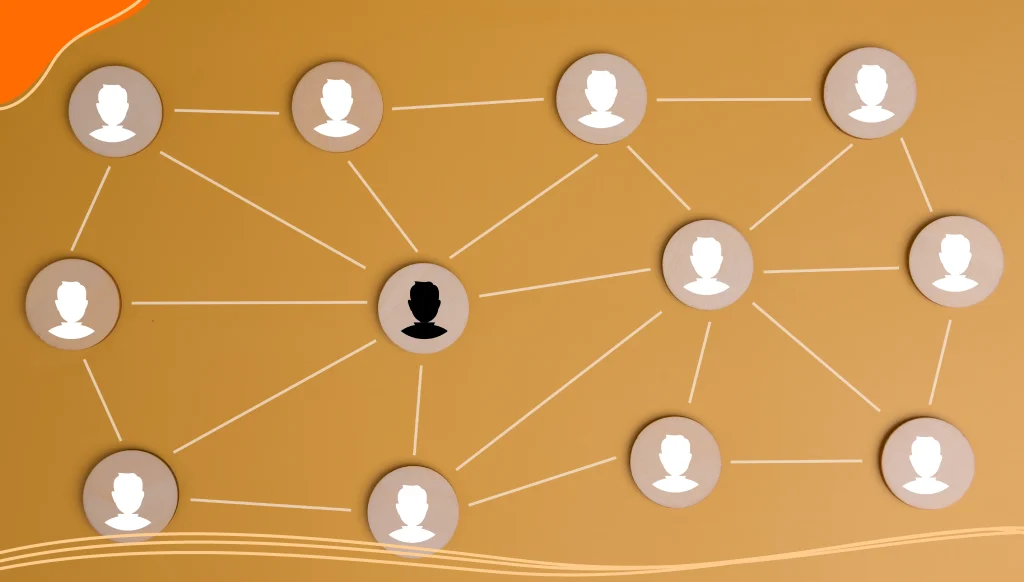
Why Make the Shift to Digital Business Cards?
The shift to virtual business cards isn’t about following the latest trend, but rather about making the networking process more efficient. Many professionals now use LinkedIn or other online resources as their primary networking method, but there is still something special about an in-person networking event. Live events allow people to create a better rapport, leading to more substantial and long-lasting connections. Digital business cards make it easier to build and expand your professional network by simplifying the exchange of contact information, ensuring you can connect seamlessly with new contacts across devices.
In the past, the main way to exchange information with people at these in-person events was through physical business cards. As we mentioned before, these traditional business cards were frequently lost, scraping all of the hard work you put into establishing that connection.
Additionally, traditional business cards were very limiting. If you wanted to change something on your card, you’d have to print out a whole new batch. Having multiple versions of your card for different situations was also quite difficult to manage; no one wants to wait while you rustle through your card holder looking for the right business card.
The Benefits of Using a Digital Business Card
Digital business cards fix a lot of the problems that come along with traditional business cards. Here are some of the main reasons why digital business cards are quickly becoming a must-have in your tech stack.
- Instantly share your contact information with a tap or scan.
- Update your details in real time without reprinting cards.
- Reduce paper waste and support eco-friendly networking.
- Stand out with interactive features like videos, links, and social profiles.
- Effortlessly collect and grow your email list during networking events or daily interactions, making it easy to follow up and build valuable connections.
1. Always Up to Date
Ever printed 500 business cards, only to change your phone number a week later? Yeah, not fun. With digital business cards, you can update your info in real-time. No reprints. No waste. Your contacts will always have your most current details, whether it’s a new email address or job title.

2. Eco-Friendly & Sustainable
The simple fact is that paper business cards aren’t exactly eco-friendly. There are some methods that you can use to make your paper business cards more sustainable, but many people will have a difficult time getting over the waste produced by paper cards. 27 million business cards are printed daily, and around 88% of these will be tossed away. Switching to a digital format helps reduce waste and makes your networking greener.
3. Instant Sharing
Networking happens fast. At conferences, trade shows, or impromptu coffee shop meetings, you want to exchange info quickly. Smart business cards give you the chance to exchange information in unexpected moments. You never know when a networking opportunity will arise. With digital cards, you can connect with a simple tap, scan a QR code, or send a text message with all your details in seconds.
4. Seamless Integration
Many digital business card apps integrate with platforms like your Apple Wallet, email clients, and even CRM software for lead generation. Some even allow you to save new contacts straight to your phone or desktop, completely skipping manual data entry.
5. Personalize Your Brand
With paper cards, once they’re printed, that’s it. But digital cards let you customize endlessly. Change colors to match your branding, upload your logo, add videos, links, and more. You’re not just handing out contact info—you’re giving a mini introduction to you and your business.

How Digital Business Cards Work
Creating and sharing a digital business card is easier than you might think. The process often begins by downloading a mobile app or accessing a web platform. Many platforms also allow you to browse a library of free stock images, backgrounds, and designs to enhance your card’s visual appeal. Here’s a step-by-step breakdown of how digital business cards work.
Step 1: Choose a Platform
When it comes to creating your digital business card, the first thing you’ll need is the right tool. Thankfully, there are dozens of apps and platforms out there that make the process incredibly simple, even if you’re not particularly tech-savvy.
Here’s a closer look at some of the most popular platforms to create cards, and what makes each one stand out:
HiHello
HiHello is one of the top players in the digital business card space—and for good reason. It’s incredibly user-friendly, available on both iOS and Android (via the Google Play Store), and has a sleek interface. You can create multiple cards for different audiences and add rich media like profile photos, company logos, and videos.
Blinq
Blinq is another popular choice, especially for people who love using NFC business cards. Their physical cards come embedded with NFC chips that link directly to your digital profile. You can use Blinq with or without the app, and it’s great for lead generation thanks to built-in analytics that track how and when people view your card.
Linq
Linq emphasizes style and function. It’s great for creatives and professionals who want their cards to do more than just share contact info. Linq lets you customize your landing page and even offers integration with desktop tools and Slack, making it a great addition to your tech stack.
Popl
Popl takes digital business cards to the next level by focusing heavily on business and enterprise solutions. It has some of the best tools for capturing leads and tracking engagement. Popl’s analytics dashboard is especially powerful for sales teams looking to track and convert new connections from networking events.
KadoNetwork
Designed with B2B users in mind, KadoNetwork focuses on secure sharing and contact management. It’s great for anyone concerned with privacy or compliance. This platform is ideal for companies looking to digitize all employee cards while maintaining a polished, professional image.
Step 2: Set Up Your Card
You’ll typically be prompted to enter your contact details: name, title, company, phone, email, website, social links, etc. Many platforms let you upload photos, videos, and documents, and even design multiple cards for different audiences—like one for clients, one for peers, and one for new leads.
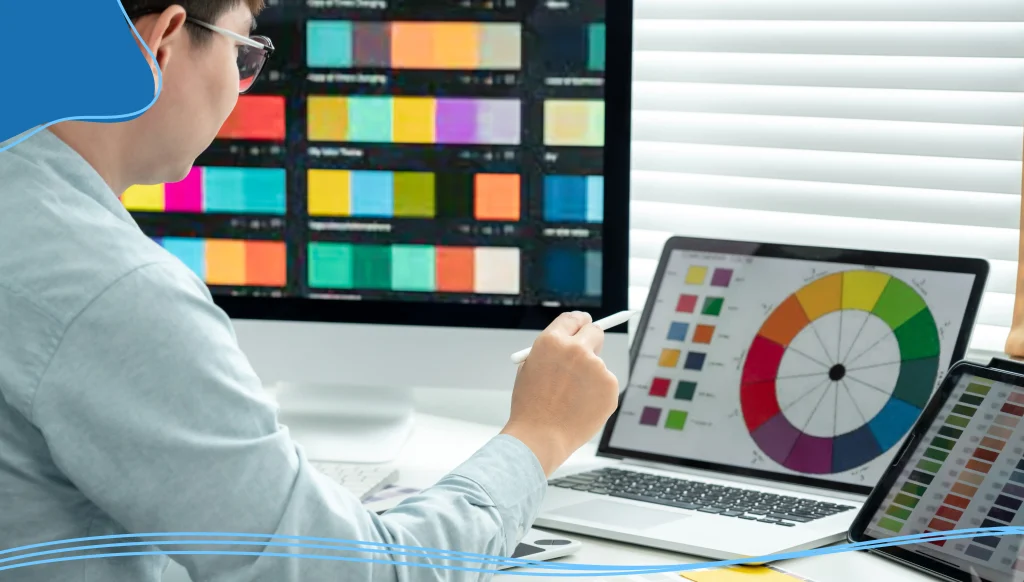
Step 3: Personalize
This is where the fun begins. Adjust your layout, pick your colors, add your logo, and match your card to your branding. Make it pop and leave that lasting impression!
Step 4: Share Away
Once your card is ready, you can share it via:
- QR code
- NFC tap (with compatible devices)
- Text message
- Email signatures
- Apple or Google Wallet
- Embedded links on your website or social media
And just like that, your card can go global without ever leaving your phone.
NFC Business Cards: The Tap-and-Go Revolution
NFC business cards take things to the next level. These physical cards (often made of plastic or metal) contain a tiny NFC chip inside. Just tap it on a smartphone, and boom—your digital card opens automatically. No app required, no friction. It works like magic, and it’s a great conversation starter at networking events. Just make sure to ensure compatibility—not all phones support NFC.
The best part about NFC technology is that it isn’t limited to business cards. You can put an NFC chip in just about anything, so it’s a great opportunity to get creative. If you’re running a bakery, you can get a plusy toy cupcake and attach an NFC tag to it. This way, people can tap their phones on the cupcake and get access to your digital business card. This is an interaction that they won’t soon forget!
Do You Need an App?
Not always! While many platforms have their own apps for easy editing and sharing, some digital cards can be accessed directly through your browser or embedded into your email signatures and websites. That said, apps do add convenience, especially if you want to scan contacts, store photos, or receive analytics on how often your card is being viewed.
But if storage space is a concern, choose a platform that offers no-app-required functionality. It’s all about finding what fits your workflow.
What About Security?
Good question. Like anything digital, security matters. Reputable platforms use encryption, password protection, and private sharing settings to keep your data safe. You also have control over what’s shown publicly and what stays private.
Plus, if you ever lose your phone, your card can still be accessed via your account on another device—something that’s definitely not possible with lost paper cards.
The Added Functionality of Digital Business Cards
Let’s be honest—traditional business cards do a decent job of sharing your name, job title, phone number, and maybe your email or website. But that’s where the conversation ends. Digital business cards, on the other hand? We’re talking full-blown interactive hubs that not only share your contact details but also connect people to your digital world in ways that paper just can’t compete with.
They can also serve as a central point for organizing and accessing business opportunities and contacts, especially when integrated with CRM and lead management tools.
Below are some of the cool bonus features that give digital cards a serious edge.

Link to Practically Anything
Unlike old-school cards, digital cards can link directly to all the things that make you you. Whether you’re a creative, entrepreneur, sales pro, or freelancer, your virtual business card becomes a fully clickable experience.
Here’s what you can add with a simple tap:
- Website: Drive traffic to your personal site, portfolio, or company homepage.
- Social media: Share your LinkedIn, Twitter/X, Instagram, TikTok, YouTube, and more.
- Calendars: Let people book a meeting with you through tools like Calendly or Google Calendar.
- Videos: Add an intro video, a product demo, or even a YouTube reel to make an immediate impact.
- Maps and addresses: Great for retail shops or offices. One click and they’ve got directions.
- PDFs: Upload your resume, brochure, pitch deck, or product sheet.
- Payment links: Freelancers and creators can link to PayPal, Venmo, or Stripe for instant payments.
- Portfolios: Artists, writers, and designers can link to Behance, Medium, or GitHub.
- Forms and lead capture: Link to Google Forms or built-in lead generation tools to capture new leads on the fly.
Integrate with Digital Tools You Already Use
Digital business cards don’t live in a vacuum. Most of them plug right into your established tech arsenal, allowing you to do more with your card than just share it.
- CRM integration: Sync new contacts directly to HubSpot, Salesforce, or Zoho.
- Email signatures: Embed your card in your signature for every email you send.
- Digital Wallets: Save cards to your digital wallet for easy access on the go.
- Smartwatch support: Yes, some even work with your Apple Watch for next-level networking.
- Desktop Sync: Some platforms let you access and share your card from your desktop, no phone required.
Built-In Lead Creation
Here’s where things get really interesting for sales teams, entrepreneurs, and marketers. Many smart business cards include features like:
- Contact capture: Let others add themselves to your list when they view your card.
- Instant CRM sync: No need to type anything in; your leads go straight to your pipeline.
- Analytics: See how often your card is viewed, who’s clicking what, and where leads are coming from.
- Custom calls-to-action: Add a “Book Now,” “Shop,” or “Download” button for real-time engagement.
Smart Branding & Personalization
With digital cards, you’re not limited to just a name and a logo. You can customize your look, layout, and messaging to match your personal or company brand.
- Choose your brand colors and fonts.
- Add custom backgrounds or a header image.
- Include a tagline, call to action, or personalized intro message.
- Add your team logo, profile photos, and more.
Some apps even offer AI-powered design tools that automatically match your branding or generate layouts based on your industry or style preferences.

Great for Teams & Businesses
Running a team or managing a company? Digital business cards are perfect for standardizing your branding and keeping everyone’s contact info consistent and up to date.
Some platforms let you create and manage cards for every person on your team, so whether you’re onboarding a new employee or promoting someone, you can instantly update their card and keep your entire company looking sharp.
Other Unexpected Perks
- Digital gifts: Some platforms let you attach gift cards or promos for new contacts.
- Language options: Create cards in multiple languages for international networking.
- Offline sharing: Yes, some apps let your card work even when there’s no Wi-Fi or data signal.
- Multi-card profiles: Create different cards for different audiences.
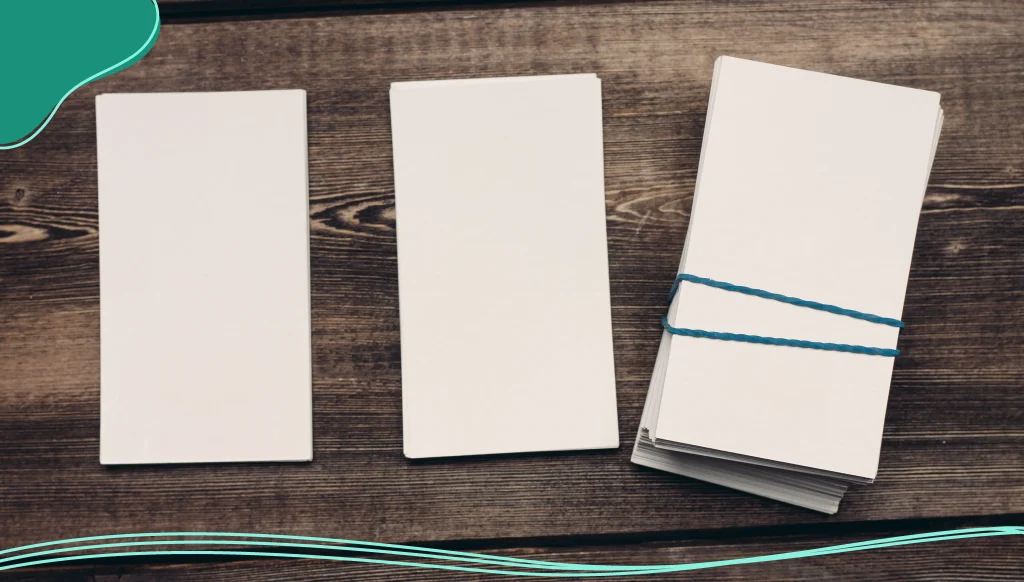
Goodbye Paper? Not Yet.
Now, are physical business cards gone forever? Not quite. There’s still a nostalgic charm and tactile quality to traditional cards that some people appreciate. In some cultures and industries, handing over a physical card still holds weight.
But digital cards are rising fast. They’re more flexible, more functional, and, frankly, more fun. They’re not here to replace every card—just to give you a smarter option.
If you still want the tangible feeling of a physical business card, you can use LogoMaker’s Business Card Maker and create a fantastic card that is sure to wow your customers. Take advantage of our wide range of printing options and unique finishes.

Conclusion
With their blend of convenience, customization, and cool tech like NFC, digital cards are the way of the future. They’re a reflection of how business, branding, and human connection are evolving in a digital-first world. Still love your stack of glossy cardstock? That’s okay. Keep a few handy and have the best of both worlds!
FREQUENTLY ASKED QUESTIONS
Do I need a specific app to use a digital business card?
Not always. Some platforms are fully web-based and don’t require an app. However, using an app can make it easier to create, edit, and manage your card.
Can I store my digital card in my Apple Wallet or Google Wallet?
Yes! Many platforms offer Apple Wallet or Google Wallet integration, so your card is always just a tap away.
Is NFC available on all phones?
Most modern smartphones support NFC, but it’s good to ensure compatibility, especially if you plan to use NFC business cards.
Are digital business cards secure?
Yes, reputable platforms use encryption and privacy controls. You can choose what information is shared and who can see it.
Can I still print my digital card?
Of course. Many tools let you download a printable version or export your info into a classic format if needed.
What’s the best platform for teams?
Look for services that offer team features, centralized management, and branding options. Blinq, HiHello, and KadoNetwork are great starting points.
Can I personalize my digital business card?
Absolutely. You can customize colors, layout, content, and even upload your logo or photos to match your brand.
How do I use a QR code to share my card?
Your smart business card platform will generate a QR code that others can scan to access your details. You can save it as an image or display it on your phone.
Can I add my digital card to my email signature?
Yes! Many platforms let you embed a clickable link or QR code right in your email signature for easy sharing.
Is this really better for the environment?
Definitely, going digital reduces paper waste and printing emissions, making it a much more eco-friendly option.
